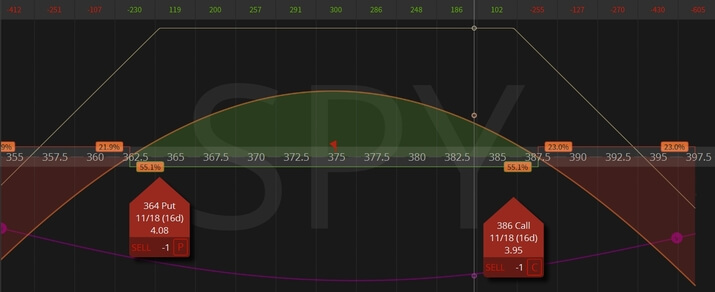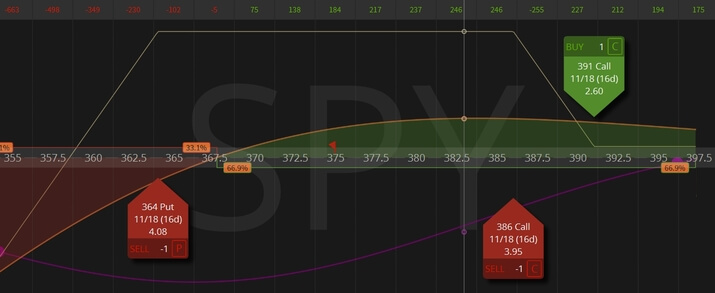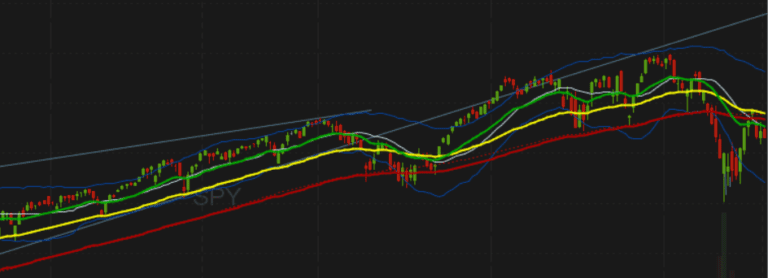Trading Options for Beginners
A lot of people think that trading options is complicated and risky. But done correctly nothing could be further from the truth! Trading options is quite simple and can be a great way to supplement your trading strategy. Here’s a guide with everything you need to know about trading and selling options.
Table of Contents
ToggleOptions Trading for Beginners: The Basics
Options are a type of contract that gives the holder the right to buy or sell an underlying asset at a set price within a certain period. The strike prices are always determined by pre-defined rules, which means you will know what your cost is before making any decisions about whether it’s worth investing in this market!
There are two types of options: call options and put options. A call option gives the holder the right to buy an asset, while a put option gives the holder the right to sell an asset.
Options Trading for Beginners: What You Need to Know
The expiration date of an option contract is the date at which the option contract expires. If the option that is bought or sold expires in the money, the seller of the option contract will be obligated to either sell or buy 100 shares at the predetermined price.
When you sell an option, you are giving the buyer of the option the right to buy or sell a security at a set strike price within a certain period. Selling options can be a great way to make money, but it can also be risky. Here’s a short tutorial for novice traders on how to sell options.
Selling Options for Income: The Terminology
Selling options can be a great way to generate income, but it’s important to understand the risks involved. Let’s discuss some of the basics of selling options and how you can use them to your advantage.
Options Trading: Strike Price
The strike price within an options contract is the predetermined price at which the particular stock will be bought or sold. There are three types of strike prices, at the money, in the money, or out of the money.
As an example call options are considered in the money if the stock’s price is above the strike price of the call option. For put options it is the opposite, the put option would be in the money if the stock price is below the strike price of the option contract.
When it comes to selling options we prefer to sell options that are out of the money at the time of selling the contract. This helps reduce large fluctuations in the price of the option and also increases the likelihood the option expires out of the money and worthless.
Options Trading: Expiration Date
An expiration date is the date at which an option contract expires. If the option that is bought or sold expires in the money, the seller of the option contract will be obligated to either sell or buy 100 shares at the predetermined strike price.
The expiration date of an option contract is important because it determines when you are obligated to fulfill your side of the deal if the option is exercised by the buyer.
Most options contracts have an expiration date that falls on either the third Friday of the month or on another specific day during the month.
Make sure you are aware of all relevant expiration dates when trading options, so you don’t find yourself in a situation where you are forced to buy or sell a stock at an unfavorable price.
Options Trading: Risk of Selling options for income
Selling options can come with a significant amount of risk if you do not understand what you are getting into. When selling options there is a potential for unlimited loss of money, but with that risk, there is an increased probability of profit compared to buying options.
Let’s pretend you are selling a put on an underlying with a stock price of $100 a share. If you sell a $95 strike put for $3.00 and the price of the underlying stock drops to $0, your loss would be $9,200. To calculate max loss you must take the strike price * 100, minus the credit received ( 95*100 – 300 for the example above).
When it comes to selling call options the risk is unlimited and this is why it is considered an advanced strategy and won’t be covering it in this article. Multiple options trading strategies include call options that could be replaced with a defined risk trade. See my right up on trading Jade Lizards for one such example.
Options Trading for Beginners: How to Start Trading
Options Trading: Brokerage
To begin to trade options you must first open an account. Options are bought and sold through brokers. You can use these brokers to trade options even if you don’t have any experience in trading. However, it’s always a good idea to learn as much as you can before you start trading. I use Tastyworks for options trading and believe they are one of the best choices if you want to sell options for income. There are also other great options, check out my post on Webull vs Robinhood
Options Trading: Choosing an Underlying Asset
When you’re ready to start trading, there are a few things you need to know. First, you need to choose an underlying asset. This is the asset that will be associated with your option contract. Popular underlying assets include stocks, commodities, and currencies.
When trading options I focus mostly on stocks and ETFs. It is important to choose stocks and ETFs that have a large amount of volume. This will avoid slippage from eating away at your potential profits.
My most traded underlying assets include:
- SPY
- QQQ
- AAPL
- AMZN
- GOOG
- AMD
Options Trading: Choosing an expiration date
Next, you need to choose an expiration date. This is the date when your option contract expires. The expiration date will determine how long you have to wait until your contract matures and you can either buy or sell the underlying asset.
For me, I like to choose somewhere between 14 and 45 days for the expiration dates. Any shorter than 14 days and you won’t collect enough premium, any longer than 45 days and it will take too long for the options premium to decay.
Options Trading: Choosing a strike price
Finally, you need to choose a strike price. This is the price at which you can buy or sell the underlying asset when your contract matures. There are multiple different options strategies you can use to determine strike price and expiration. See my Options Trading section for some basic strategies that you can start using today.
Options Trading: How much should you risk
When it comes to your initial investment, every person will be different. To start trading options you will need at least $2000 to start. Less than this and you will struggle to invest in the most well-known stocks and ETFs with a stock price of greater than $100. If using margin it is important to never use more than 50% of your total buying power. Using more than this risks blowing your account up.
Options Trading: Intrinsic value vs extrinsic value
An option’s extrinsic value is the portion of its total value that is derived from factors such as the time until expiration and implied volatility. As time and volatility increase so does the option’s extrinsic value.
An option’s intrinsic value, on the other hand, is the portion of its total value that is derived from the difference between the current market price of the underlying security and the strike price of the option. As the underlying stock price goes further in the money, the price of the option increases.
When an option has intrinsic value, it is said to be in the money. Out-of-the-money options have no intrinsic value and this is why we focus on selling them. The movement of the underlying stock matters less than the passage of time for out-of-the-money options.
Options Trading: Delta and Theta
Delta
Delta is a measure of an option’s sensitivity to changes in the price of the underlying security. It is expressed as a percentage and tells you how much the option price will change if the stock price moves by one dollar.
For example, if the delta for an option is 0.50 then the option price will move by $0.50 for every $1 move in the underlying stock price. When selling options we look for options that are out of the money and a delta less than 0.50.
The delta you choose will depend on how bullish or bearish you are on the underlying and also on the specific strategy you are using. Most people looking to collect premiums will sell an option between 0.30 and 0.15 delta.
Theta
When it comes to selling options for income, time decay is your best friend. Theta is a measure of how much an option’s premium will decrease as time passes. It’s usually expressed in terms of dollars per day and tells you how much the premium will decrease for every day that passes until expiration. For example, if Theta for an option is -$0.10 then the premium will decrease by $0.10 each day until expiration.
The closer an option gets to expiration the greater the Theta. This can be a good thing but as we get closer to expiration, there can be wild swings in the delta that can wipe out any gains you make from theta decay. This is why most sellers of options like to stay between 14 and 45 days to expiration. It tends to be the best “bang for your buck” when it comes to collecting premium.
Options Trading: Strategies to try
There are a variety of different option strategies that you can use when trading options. You can choose a bullish, bearish, or neutral trading strategy. The main types that I trade include:
The Short Strangle
The short strangle is a strategy where you sell an out-of-the-money put and an out-of-the-money call at the same time for the same expiration date. This strategy profits if the underlying asset stays stagnant or moves slightly up or down.
The maximum profit for this trade is earned when the stock price finishes right in between the strike prices of the put and call.
This trade has a higher probability of success than other strategies, but also comes with a higher risk. Another alternative to this trade is the Iron Condor which is a defined risk trade that makes money if the stock has limited price movement in either direction.
The jade lizard is similar to the short strangle but includes a long call to limit the upside risk. This is currently one of my favorite options trading strategies. Check out my write-up on how to set up this trade!
The Wheel Strategy
The wheel strategy is a compound options trading strategy in which you sell cash secured puts until your option expires in the money and you are put 100 shares. This is then followed up by selling covered calls against your newly acquired shares until the underlying is then called away from you. All the while collecting premium. Check out my write-ups on cash-secured puts and covered calls for more information.
What are the advantages of selling options over buying options?
The main advantage of selling options is that you do not have to be correct about the direction to make a profit. When buying a call, the only way of making a profit is to be correct about the underlying stock going up in price. Your chance of losing most or all of the premium paid is greater than 50%.
If instead of buying a call option you instead sell a put option, you have a much higher chance of success. Not only will you make money if the stock goes up, but you will also make money if the stock doesn’t move at all. You are usually about twice as likely to make a profit when selling options over buying them.
I am not saying there isn’t a time to buy options. For short-term market trends, I will attempt to buy a call or put depending on which direction I think the market will move. These are usually only held for a day so that the option value doesn’t start to decay.
Conclusion
Trade stocks that you wouldn’t mind owning for the longer term. This frees you up from owning a stock that you never wanted in the first place. Chasing premium and high-volatility stocks can be dangerous for your account. Start with small trades and get some success under your belt. See how options prices change over time. Over time you will start to build confidence and can jump into more complicated stocks.
Now that you understand the basics of how to trade options, it’s time to start trading! The stock market can be a dangerous place when you don’t know what you are doing. Trading options can be a profitable venture if done correctly!












One Comment